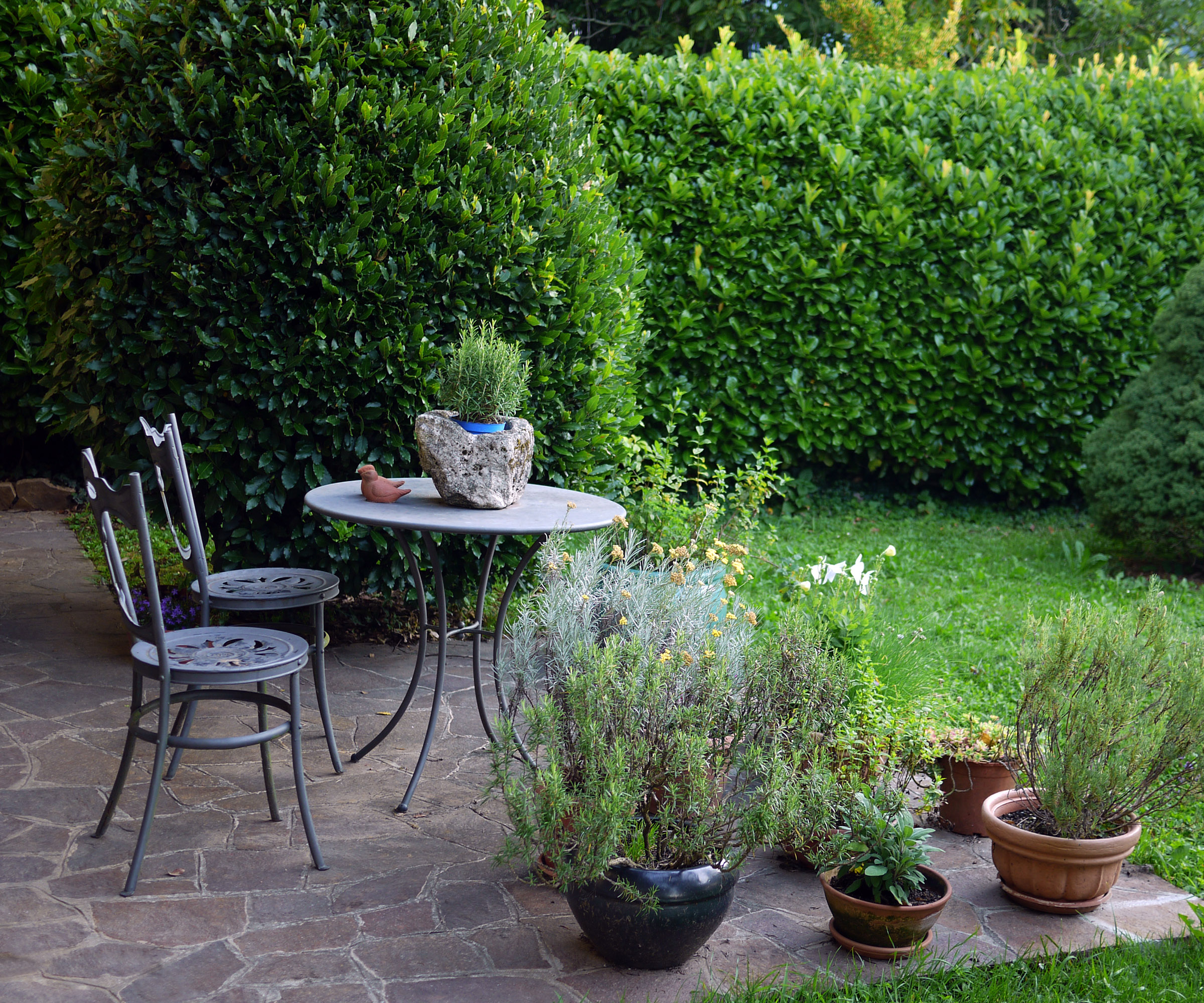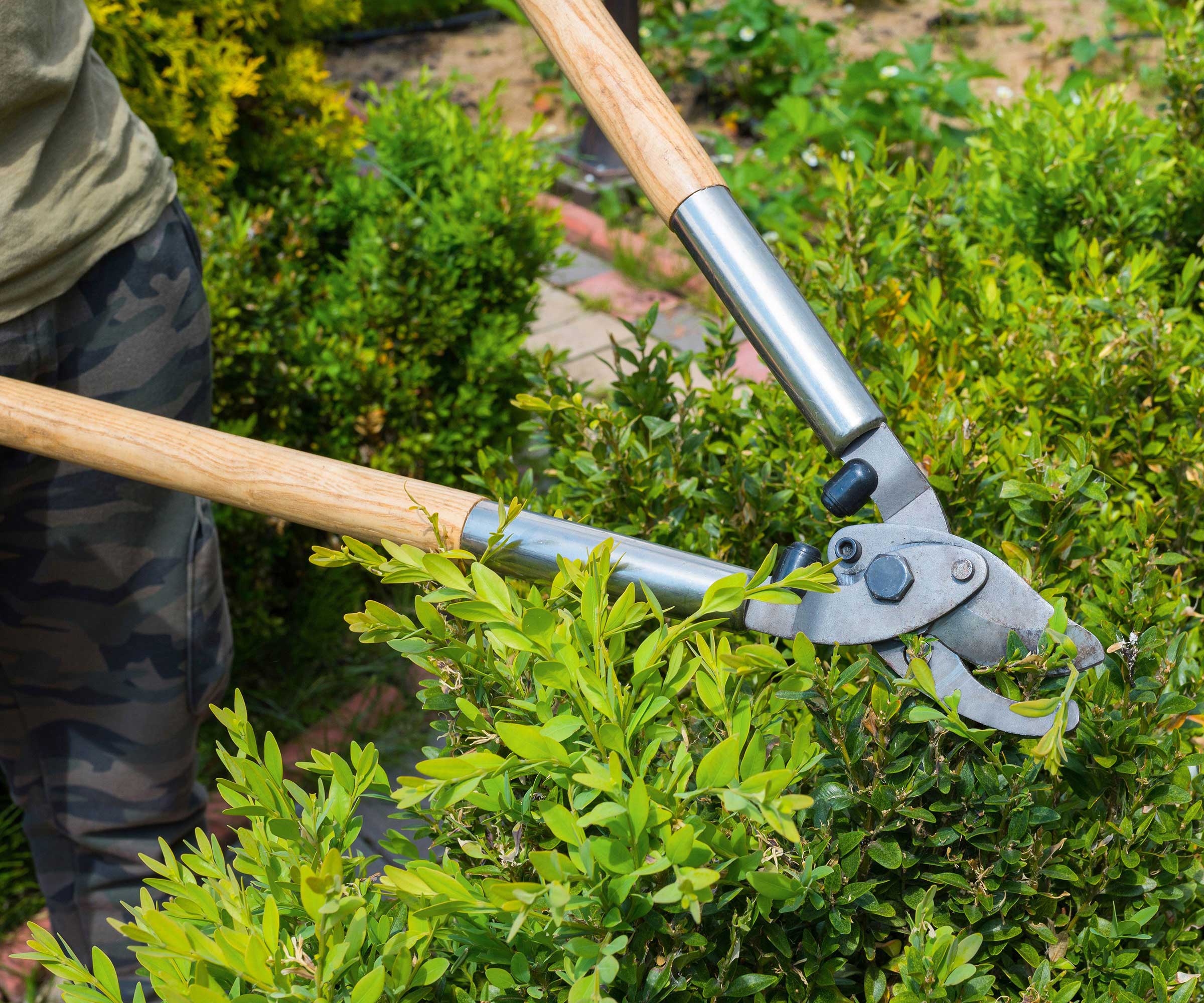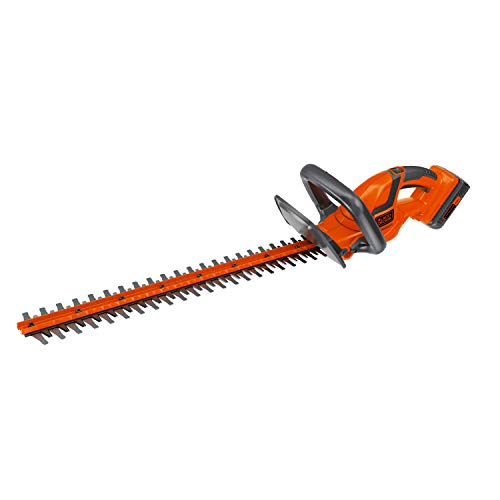Is it antisocial to have an overgrown hedge? Avoid upsetting your neighbors with our expert advice
Is your yard a blot on the local landscape with its too-tall trees and scruffy foliage? We look at the etiquette of keeping your borders in check


A hedge is a natural way of marking a boundary. It has been used for thousands of years to split land into fields for growing crops. In a residential setting, closely planted shrubs and bushes are most commonly used to form a boundary to your yard that can provide privacy and change with the seasons, especially if they are flowering hedges.
If you choose to go with a living, growing divide rather than an inanimate fence panel, you need to be ready for the upkeep. Unkempt hedges can be a blight on good neighborly relations. What to you might be a lush and vibrant barrier to noise, inquisitive eyes or intruders, could be a messy sunblocker to the people living next door.
But what is the etiquette of proper hedge maintenance? We spoke to the experts to find out.

Is your overgrown hedge a problem?
There are a lot of questions around hedge maintenance in relation to your local area. How often should you cut it, and who is responsible if your hedge is overhanging your neighbor’s yard, for instance. We have spoken to experts to discover the essential considerations when it comes to keeping your hedges in check.
Consider the aesthetic of your local area

A quick walk round the neighborhood will tell you whether your hedge is sympathetic to the local aesthetic. If yours sticks out like a sore green thumb because of its height or untidiness, or because it impedes progress along the sidewalk, you may find yourself being side-eyed as a neglectful gardener.
‘Tall hedges are much more acceptable if they're well maintained,’ says Rafi Friedman, an expert in outdoor design. ‘You should prune them at least once a year in order to keep them from getting out of proportion, no matter how tall you want them to grow.
‘Let your neighbors be your guide here. If your hedge isn't much taller than a neighbor's fence, there's probably nothing wrong with it. Also, make sure you're following your HOA's regulations around hedge height.’

As CEO of Coastal Luxury Outdoors, a Florida-based pool-building and cleaning company, Rafi has years of experience at creating high-quality custom backyard experiences.
Know your local laws around hedge heights

One thing you should take into account is that the upkeep of your hedge might be as much a matter of law as it is of good manners.
‘In the United States, local ordinances often regulate hedge height and maintenance,’ says Tommy Mello, a leader in the home service industry. ‘These regulations can vary significantly from one municipality to another. For instance, some cities might restrict hedge height to six feet to ensure that neighbors’ views and sunlight are not obstructed.
‘It’s crucial for homeowners to check their local laws to ensure compliance. HOAs can impose their own rules, which might be stricter than municipal regulations.’
For maintaining hedges of all sizes, an adaptable trimmer like this EGO power multihead combo kit from Lowe's is an essential purchase.

As the founder of A1 Garage Door Service, a $100M+ business that he started in Phoenix, Arizona, Tommy has become a leader in the home service industry. An author and podcaster, he is always happy to share his knowledge and expertise.
Understand HOA rules and regulations

‘Homeowners’ Associations (HOAs) often have specific guidelines regarding hedge maintenance to ensure uniformity and aesthetic appeal in the community,’ continues Tommy. ‘These can include regular trimming schedules, specific height limits, and requirements to keep hedges neatly trimmed.
‘HOAs might also impose fines or penalties for non-compliance, making it essential for homeowners to familiarize themselves with and adhere to these rules.’
But as well as being the guardians of neighborhood orderliness, the HOA can provide mechanisms to find equitable resolutions to disputes over hedge maintenance
‘This can include mediation services or a formal complaint process, which helps address grievances in a structured manner,' Tommy adds.
Choose the right plants for your hedge

The bushiness of your hedge will depend on the plant, as some grow more quickly than others.
‘Boxwood, Pittosporum tenuifolium, bay laurel, English laurel, Carolina Cherry Laurel, Texas privet, camellia and plum pine are all commonly used,’ says Aileen Carroll, a garden consultant from California. ‘Boxwoods don’t have to be hedged nearly as often as pittosporums because they have a slower growth rate. However, they often need more maintenance because they are more susceptible to pest and disease pressures.
'It’s best to consult with a garden professional local to your area over the right choice of plant,' continues Aileen. 'While a hedge of pineapple guava might be fantastic in Napa Valley, it wouldn’t be a suitable choice if you’re not living with a Mediterranean climate. You can also take a walk through your neighborhood and see what’s working well for other people.’
These versatile laurel varieties from Fast Growing Trees all make excellent hedges that you can sculpt into neatness. But always ask how easy they are to care for before you buy.

Aileen describes herself as a ‘professional green thumb’, living and working in the Napa Valley. As well as being a manager at Van Winden Garden Center, she is also an author and regular commentator on garden topics.
Take care of the cuttings

If you are establishing a new hedge along the border of your yard, it is worth considering how it will impact the people next door and your relationship with them. If you get on well you can easily come to an agreement on who cuts it and how often. If you don't and it becomes overgrown this may lead to tension.
‘If you are planting a hedge on your property line be prepared to have a conversation with your neighbor,’ says Aileen. ‘Almost inevitably some branches will hang over the fence and need to be dealt with.
'I have clients whose gardening crews have permission to go onto the neighbor’s property to keep a hedge tidy on both sides. With other clients, either the neighbors don’t mind an unruly hedge popping up over their fence or happily take responsibility for its maintenance.
‘If you have a contentious relationship with your neighbor, you should choose your hedging material wisely.’

This cordless hedge trimmer is lightweight and easy to manoeuvre. The rechargeable battery means no cable to worry about or get in the way.
If you are starting your hedge from scratch and need to know what to plant and when, you can discover our helpful guide on how to plant a hedge. It is packed with practical advice on how to create a lush and colorful garden divider.
Sign up to the Homes & Gardens newsletter
Design expertise in your inbox – from inspiring decorating ideas and beautiful celebrity homes to practical gardening advice and shopping round-ups.

Alison is a contributing gardens writer for Homes & Gardens, writing on a range of topics from plant care to garden design. She has recently landscaped the outside space of her Victorian home, replacing crazy paving and cracked slabs with new lawn, and is currently cultivating a fruit bed.
-
 ‘It leads to more headaches than it's worth’ – 4 reasons you should never store things in your oven, including fire risks and serious illness
‘It leads to more headaches than it's worth’ – 4 reasons you should never store things in your oven, including fire risks and serious illnessYour oven is for cooking, and cooking only, experts urge
By Chiana Dickson
-
 Urban gardening ideas – 7 creative ways to grow in small spaces, balconies, containers, indoors, and more
Urban gardening ideas – 7 creative ways to grow in small spaces, balconies, containers, indoors, and moreMake the most of your space with these innovative ways to garden
By Tenielle Jordison